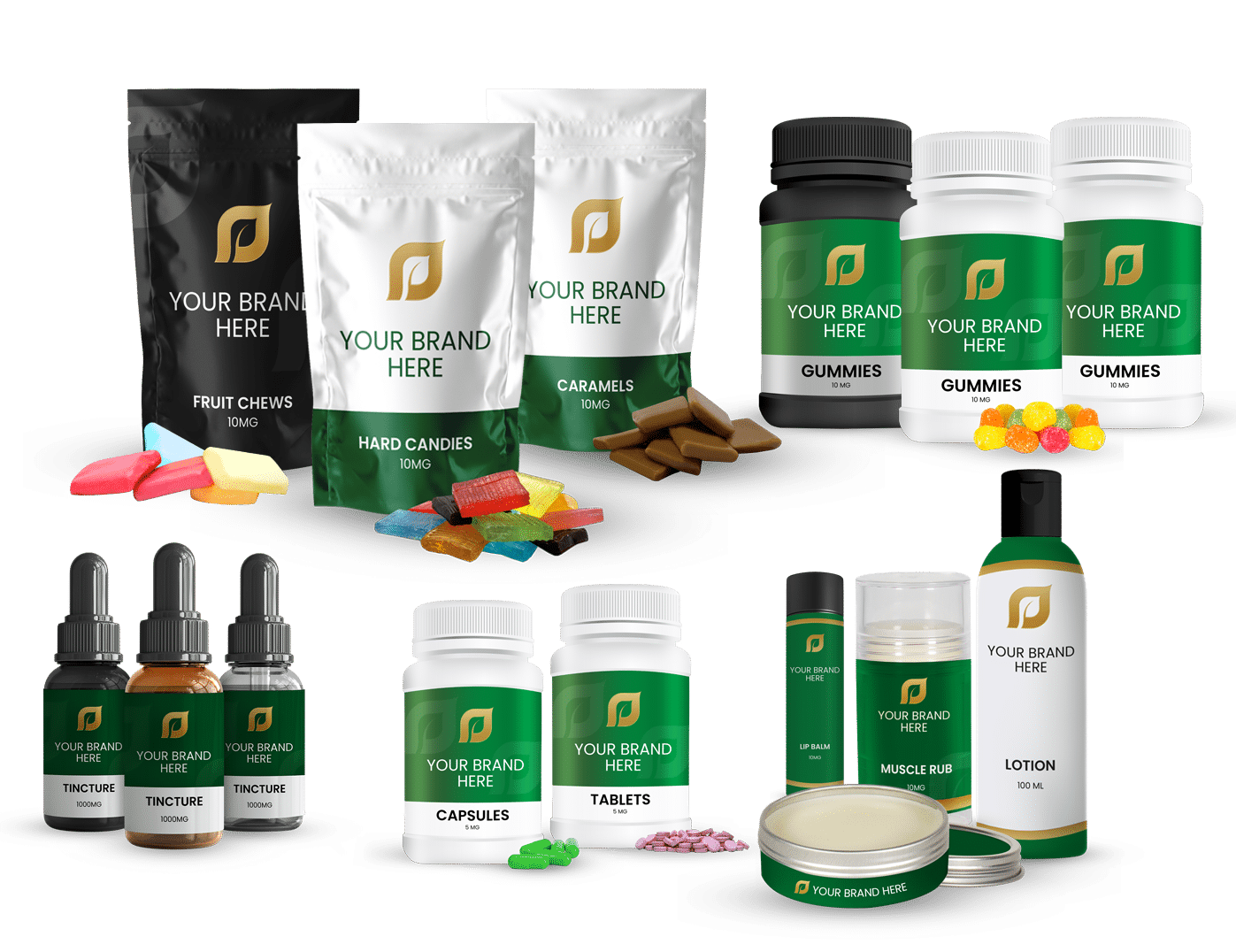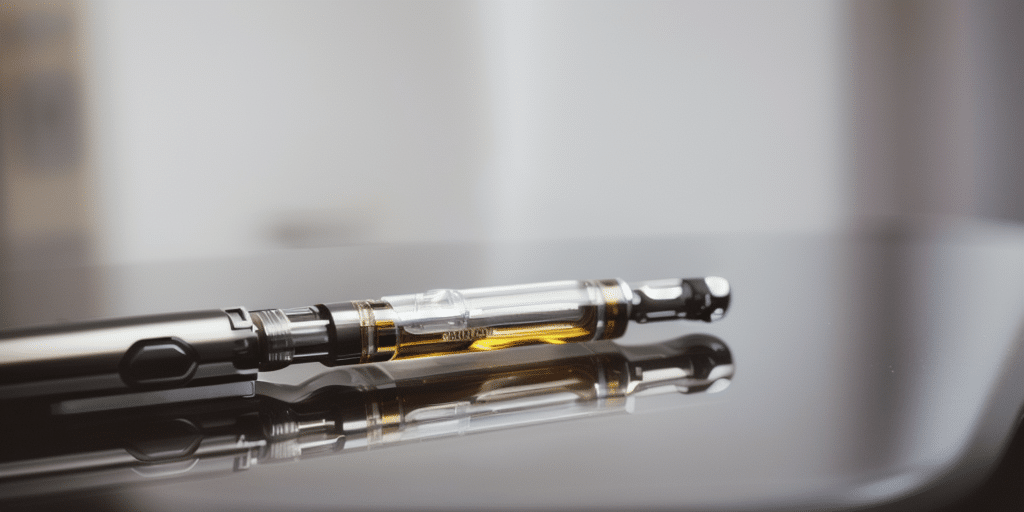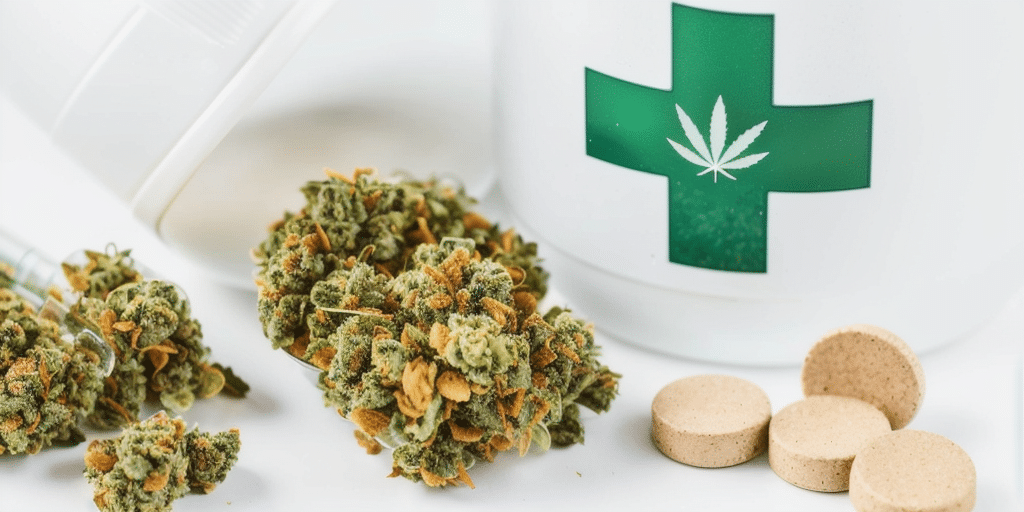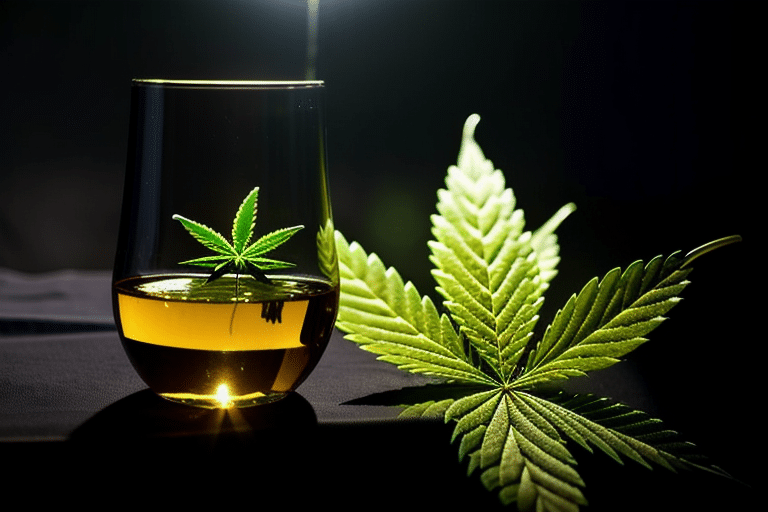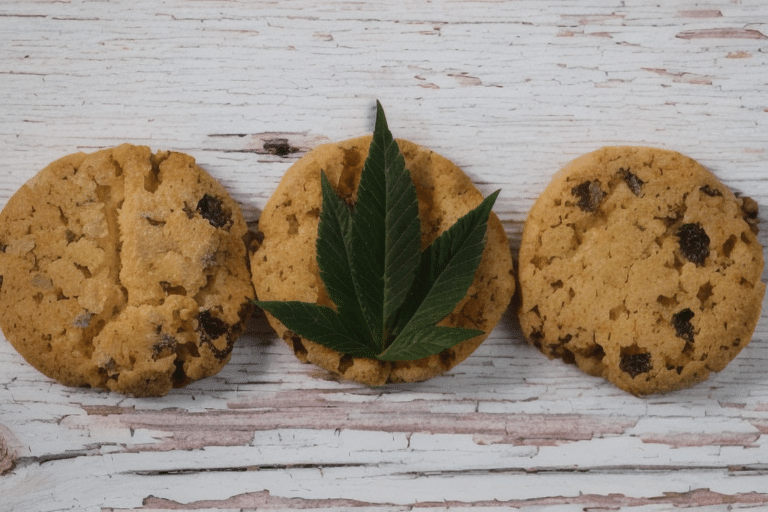Picture this: You’re browsing the supplement aisle, trying to find the perfect natural remedy to support your well-being. Suddenly, you’re faced with a dizzying array of cannabinoid options—CBD, CBN, CBG, CBC. Sound familiar? If you’ve ever found yourself wondering which cannabinoid is right for you, you’re not alone.
In this post, we’ll dive deep into the world of cannabinoids, providing a comprehensive comparison of CBD, CBN, CBG, and CBC. By understanding the unique properties and potential benefits of each compound, you’ll be empowered to make an informed decision about which cannabinoid best suits your individual needs.
Apologies for the confusion. Here’s the updated Key Takeaways section focusing solely on specific cannabinoids and their differences and similarities:
Table of Contents
ToggleKey Takeaways:
- CBD and CBN are both non-psychoactive, but CBD is primarily known for reducing anxiety and inflammation, while CBN is most valued for its sedative properties
- CBG and CBC are less abundant in mature cannabis plants compared to CBD and THC, but they offer unique potential benefits for gut inflammation and skin health, respectively
- CBD and THC are the most well-known cannabinoids, with CBD offering many benefits without the “high,” while THC is responsible for the psychoactive effects of cannabis
- CBN is created when THC degrades over time, especially when exposed to air, light, or heat, resulting in a cannabinoid with distinct properties from its parent compound
But first, let’s set the stage. Cannabinoids are a fascinating class of compounds found in the cannabis plant. While CBD has undoubtedly stolen the spotlight in recent years, there’s so much more to explore. CBN, CBG, and CBC each bring their own distinct advantages to the table, from promoting sleep and relaxation to supporting brain health and fighting inflammation.
As we journey through this guide, we’ll unpack the science behind these cannabinoids, explore their potential applications, and provide practical tips for incorporating them into your wellness routine. Whether you’re a curious beginner or a seasoned enthusiast, there’s something here for everyone.
So, grab a cup of tea, settle in, and get ready to discover the world of cannabinoids like never before. By the end of this post, you’ll have the knowledge and confidence to choose the right cannabinoid for your unique needs and embark on a path towards enhanced well-being. Let’s dive in!
What are Cannabinoids?
Cannabinoids are a fascinating family of chemical compounds that naturally occur within the cannabis plant. While THC and CBD are the most well-known members of this group, the cannabis plant actually produces over 100 distinct cannabinoids, each with its own unique properties and potential benefits.
At their core, cannabinoids are specialized molecules that interact with the body’s endocannabinoid system (ECS). The ECS is a complex network of receptors found throughout the brain, nervous system, and various organs that helps regulate many vital functions, including mood, appetite, sleep, and immune response.
When cannabinoids like CBD, THC, CBN, CBG, or CBC enter the body, they engage with the ECS receptors, potentially influencing these functions in various ways. For example, THC binds strongly to the CB1 receptors in the brain, producing the famous “high,” while CBD interacts more gently, providing potential relief from anxiety, inflammation, and pain without the intoxicating effects.
The therapeutic potential of cannabinoids first gained significant attention in the 1960s when Israeli scientist Dr. Raphael Mechoulam isolated and synthesized THC and CBD. Since then, ongoing research has continued to uncover new cannabinoids and explore their possible applications for health and wellness.
Today, as cannabis laws evolve and the stigma surrounding the plant fades, more people are discovering the potential benefits of this diverse family of compounds. From the calming effects of CBD to the sleep-promoting properties of CBN, each cannabinoid offers a unique profile of effects and advantages worth exploring.
Whether you’re seeking relief from chronic pain, better sleep, improved focus, or just a natural way to unwind and de-stress, understanding the basics of cannabinoids is an essential first step in finding the right option for your individual needs and goals. So let’s dive deeper into some of the most promising members of the cannabinoid family.
CBD (Cannabidiol)
CBD, or cannabidiol, has become a household name in recent years, and for good reason. This non-psychoactive cannabinoid, derived from the hemp plant, offers a wide range of potential therapeutic benefits without the “high” associated with marijuana use.
CBD works by interacting with the body’s endocannabinoid system, helping to regulate functions like sleep, appetite, pain, and immune response. It’s commonly extracted from hemp using CO2 or ethanol-based methods, then processed into various products like oils, capsules, edibles, and topicals.
One of the most well-known uses of CBD is for reducing anxiety and stress. A 2019 study published in the Journal of Clinical Medicine found that 79.2% of participants reported decreased anxiety scores after one month of CBD treatment. [1]
CBD has also shown promise in relieving pain and inflammation. A 2020 review published in Frontiers in Pharmacology concluded that CBD could be an effective treatment for chronic pain, especially neuropathic pain. [2]
For those with epilepsy, CBD may offer hope for reducing seizure frequency. In fact, the FDA has approved a CBD-based drug called Epidiolex for treating certain types of epilepsy. [3]
CBD may also improve sleep quality, thanks to its calming effects on the nervous system. A 2019 study in the Permanente Journal found that 66.7% of participants reported improved sleep within the first month of CBD use. [4]
Emerging research even suggests that CBD may have neuroprotective and anti-tumor properties, though more studies are needed to confirm these potential benefits.
When it comes to using CBD, there are many options to choose from:
- Tinctures and Oils: Allow for easy dosing and can be taken sublingually for fast absorption.
- Capsules and Edibles: Offer a pre-measured dose in a convenient, discreet form.
- Topicals: Can be applied directly to the skin for localized relief of pain and inflammation.
As with any supplement, it’s essential to start with a low dose and gradually increase as needed. A typical starting dose is around 10-20mg per day, but optimal dosage can vary widely depending on factors like weight, metabolism, and the severity of symptoms.
While CBD is generally considered safe, it can cause side effects like dry mouth, diarrhea, and changes in appetite or weight in some people. It may also interact with certain medications, so it’s always best to consult with a healthcare provider before starting CBD, especially if you have pre-existing health conditions.
Thankfully, CBD derived from hemp is now legal at the federal level in the United States, though some states may have more restrictive laws. When shopping for CBD products, look for reputable brands that provide third-party lab test results to ensure purity and potency.
Whether you’re seeking relief from anxiety, pain, insomnia, or other health concerns, CBD offers a promising natural alternative worth exploring. Just remember to approach it with realistic expectations and always prioritize quality and safety when choosing a product.
CBN (Cannabinol)
If you’re seeking a natural sleep aid or appetite stimulant, CBN (cannabinol) may be the cannabinoid for you. Unlike its more famous cousin THC, CBN is non-psychoactive, meaning it won’t produce the “high” commonly associated with cannabis use.
CBN is actually created when THC degrades over time, especially when exposed to air, light, or heat. This process converts THC into CBN, which has distinct properties and potential benefits.
One of the most notable effects of CBN is its sedative properties. A 2017 study published in the Journal of Psychopharmacology found that a combination of CBD and CBN showed promise as a sleep aid, with participants reporting improved sleep quality and duration. [5]
CBN may also help stimulate appetite, which could be beneficial for those struggling with appetite loss due to medical conditions or treatments. A 2012 study in Psychopharmacology found that CBN increased feeding in rats, suggesting potential as an appetite stimulant. [6]
In addition to its sleep and appetite benefits, CBN has also shown potential for relieving pain and inflammation. A 2019 study in the Journal of Natural Products found that CBN, along with other cannabinoids, demonstrated anti-inflammatory properties in vitro. [7]
CBN may even have potential for treating glaucoma, a condition characterized by increased pressure in the eye. A study published in the Journal of Ocular Pharmacology and Therapeutics found that CBN reduced intraocular pressure in rats, suggesting therapeutic potential for glaucoma. [8]
Emerging research also hints at CBN’s antibacterial properties. A 2008 study in the Journal of Natural Products found that CBN showed potent activity against MRSA, a type of antibiotic-resistant bacteria. [9]
Currently, CBN is most commonly used in sleep aids, sedatives, and appetite stimulants. These products may come in the form of oils, capsules, or edibles. As with any cannabinoid, it’s best to start with a low dose (around 2-5mg) and gradually increase as needed and tolerated.
While CBN is generally considered safe, it may cause side effects like drowsiness, dizziness, and dry mouthin some people. It can also interact with certain medications, particularly sedatives and blood thinners, so it’s essential to consult with a healthcare provider before using CBN products.
Thanks to the 2018 Farm Bill, CBN derived from hemp is legally available in many parts of the United States. However, state laws can vary, so always check your local regulations before purchasing or using CBN products.
As research into CBN continues to expand, we may uncover even more potential benefits and applications for this unique cannabinoid. For now, if you’re looking for a natural way to improve sleep, boost appetite, or find relief from pain and inflammation, CBN is definitely worth considering as part of your wellness routine.
CBG (Cannabigerol)
Often overshadowed by its more famous descendants like THC and CBD, cannabigerol (CBG) is a non-psychoactive cannabinoid that deserves more attention for its unique properties and potential benefits.
Known as the “mother cannabinoid,” CBG is the precursor to other cannabinoids like CBD, THC, and CBC. In young cannabis plants, CBG is found in high concentrations, but as the plant matures, enzymes convert CBG into these other cannabinoids, leaving only trace amounts of CBG in the final product.
Despite its low concentrations in mature plants, CBG has shown promise for a variety of health applications. One of its most notable potential benefits is in reducing inflammation, particularly in the gut.
A 2013 study published in Biochemical Pharmacology found that CBG reduced inflammation in the colons of mice with induced colitis, suggesting potential for treating inflammatory bowel disease (IBD) in humans. [10]
CBG has also shown potential for fighting cancer cells. A 2014 study in Carcinogenesis found that CBG inhibited the growth of colorectal cancer cells in mice, exhibiting promise as a chemopreventive agent. [11]
In addition to its anti-inflammatory and anti-tumor properties, CBG may also promote brain health and neurogenesis (the growth of new brain cells). A 2015 study in Neurotherapeutics found that CBG stimulated neurogenesis and exhibited neuroprotective properties in mice with Huntington’s disease, a neurodegenerative disorder. [12]
Like other cannabinoids, CBG has also shown potential for lowering intraocular pressure, which could be beneficial for treating glaucoma. A 1990 study in the Journal of Ocular Pharmacology found that CBG reduced intraocular pressure in cats, albeit not as effectively as THC. [13]
Emerging research also suggests that CBG may have antibacterial properties, particularly against antibiotic-resistant strains like MRSA. A 2020 study in ACS Infectious Diseases found that CBG showed potent activity against MRSA isolates, indicating potential as an antibacterial agent. [14]
Currently, CBG is most commonly found in digestive health supplements, topicals for inflammation, and neuroprotective treatments. As with other cannabinoids, it’s best to start with a low dose (around 2.5-5mg) and gradually increase as needed and tolerated.
While CBG is generally considered safe, it may cause side effects like dry mouth, drowsiness, and changes in appetite in some people. It can also interact with certain medications, so it’s essential to consult with a healthcare provider before using CBG products.
Thanks to the 2018 Farm Bill, CBG derived from hemp is legally available in many parts of the United States. However, due to its low concentrations in mature plants and the difficulty of extraction, CBG products tend to be more expensive and less widely available than CBD products.
As research into CBG continues to expand, we may uncover even more potential benefits and applications for this unique cannabinoid. For now, if you’re looking for a natural way to reduce inflammation, promote brain health, or support overall wellness, CBG is definitely worth considering as part of your cannabinoid routine.
CBC (Cannabichromene)
While CBD, THC, and even CBG have gained significant attention in recent years, there’s another lesser-known cannabinoid that deserves a closer look: cannabichromene, or CBC.
Like its more famous cousins, CBC is a non-psychoactive compound, meaning it won’t produce the “high” associated with THC. However, it does offer a unique array of potential benefits, particularly in the realm of pain relief and inflammation management.
CBC is produced through a similar process as other cannabinoids, starting with the same precursor (CBGa) and eventually being converted into CBC through enzymatic reactions. Once formed, CBC interacts with the body’s endocannabinoid system, though in a slightly different way than CBD or THC.
One of the most promising potential benefits of CBC is its ability to relieve pain and inflammation. A 2010 study published in the journal Drug Alcohol Dependence found that CBC, along with CBD and THC, showed significant anti-inflammatory and analgesic effects in animal models. [15]
In addition to its pain-relieving properties, CBC has also shown potential for promoting brain health and neurogenesis (the growth of new brain cells). A 2013 study in Neurochemistry International found that CBC enhanced the viability of neural stem progenitor cells (NSPCs), which are essential for brain growth and healthy brain function. [16]
For those struggling with acne or other skin inflammations, CBC may offer a promising natural solution. A 2016 study in Experimental Dermatology found that CBC, along with other cannabinoids, showed potential for treating acne due to its anti-inflammatory properties. [17]
Emerging research also suggests that CBC may have anti-tumor and antidepressant properties, though more studies are needed to fully understand these potential benefits.
Currently, CBC is most commonly found in pain relief formulas, skincare products, and mood support supplements. As with other cannabinoids, it’s best to start with a low dose (around 5-10mg) and gradually increase as needed and tolerated.
While CBC is generally considered safe, it may cause side effects like dry mouth, drowsiness, and changes in appetite in some people. It can also interact with certain medications, so it’s essential to consult with a healthcare provider before using CBC products.
Thanks to the 2018 Farm Bill, CBC derived from hemp is legally available in many parts of the United States. However, due to its lesser-known status, CBC products may be harder to find and more expensive compared to CBD products.
As research into CBC continues to expand, we may uncover even more potential benefits and applications for this unique cannabinoid. For now, if you’re looking for a natural way to relieve pain, reduce inflammation, or support brain health, CBC is definitely worth considering as part of your cannabinoid wellness routine.
How to Choose the Right Cannabinoid
With so many cannabinoids to choose from, each with its own unique properties and potential benefits, it can be challenging to know where to start. However, by taking a thoughtful, strategic approach, you can find the right cannabinoid (or combination of cannabinoids) to support your individual health goals and wellness routine.
The first step is to clearly define your primary health objectives and desired effects. Are you looking to reduce anxiety and stress? Relieve chronic pain and inflammation? Improve sleep quality? Support brain health and cognitive function? Once you have a clear idea of your goals, you can start to narrow down which cannabinoids are most likely to help.
It’s also essential to carefully evaluate potential side effects and drug interactions before starting any new cannabinoid regimen. While cannabinoids are generally considered safe, they can cause side effects like dry mouth, drowsiness, and changes in appetite in some people. They can also interact with certain medications, particularly blood thinners and sedatives, so it’s always best to consult with a healthcare provider, especially if you have pre-existing health conditions.
When shopping for cannabinoid products, quality is key. Look for reputable brands that provide third-party lab test results, which verify the potency and purity of the product and screen for contaminants like heavy metals and pesticides. This added layer of transparency can give you peace of mind that you’re getting a safe, effective product.
Dosage is another important consideration. Because everyone’s body chemistry is unique, there’s no one-size-fits-all approach to cannabinoid dosing. In general, it’s best to start with a low dose (around 5-10mg, depending on the cannabinoid) and gradually increase as needed and tolerated. Keep a journal to track your doses and effects, and be patient – it can take several weeks of consistent use to fully realize the benefits.
Finally, be aware of the legal status and accessibility of each cannabinoid in your area. While hemp-derived CBD is widely available across the United States, other cannabinoids like CBN, CBG, and CBC may be harder to find and are subject to evolving state regulations. Always check your local laws before purchasing or using cannabinoid products.
By taking the time to understand your goals, evaluate potential risks and interactions, prioritize quality and safety, start low and go slow with dosing, and stay informed about legal considerations, you can make an empowered, personalized choice about which cannabinoid(s) to incorporate into your wellness routine. Remember, everyone’s journey with cannabinoids is unique – what works for one person may not work for another. Trust your body, listen to your intuition, and don’t be afraid to experiment until you find the right fit.
Cannabinoid Combinations and the Entourage Effect
While each cannabinoid offers its own unique set of potential benefits, many experts believe that they work best in synergy, a phenomenon known as the “entourage effect.” The idea is that the various compounds in cannabis, including cannabinoids, terpenes, and flavonoids, interact in complex ways to enhance or modulate each other’s effects.
In other words, the therapeutic impact of the whole plant is greater than the sum of its individual parts. This concept has led to a growing interest in “full-spectrum” or “broad-spectrum” cannabis products, which contain a wide range of naturally occurring compounds, as opposed to isolates, which only contain a single purified cannabinoid.
So, what are some common cannabinoid combinations that may offer enhanced benefits through the entourage effect? One of the most well-known synergistic pairs is CBD and THC. While THC is known for its psychoactive effects, it’s also a potent pain reliever and anti-inflammatory agent. CBD, on the other hand, can help temper the intoxicating effects of THC while providing its own anti-inflammatory, anti-anxiety, and neuroprotective benefits. Together, CBD and THC may offer enhanced relief for conditions like chronic pain, arthritis, and multiple sclerosis.
Another promising combination is CBD and CBN for sleep and relaxation. As mentioned earlier, CBN is known for its sedative properties, while CBD can help ease anxiety and promote a sense of calm. When used together, particularly in a full-spectrum product that also includes sleep-promoting terpenes like linalool and myrcene, CBD and CBN may offer a powerful natural alternative to conventional sleep aids.
For those struggling with digestive issues like inflammatory bowel disease (IBD), a combination of CBD and CBG may offer some relief. Both cannabinoids have shown anti-inflammatory effects in the gut, with CBG demonstrating particular promise in animal studies of colitis. By working together to reduce inflammation and regulate gut motility, CBD and CBG may help manage symptoms and promote overall digestive health.
Of course, finding the right cannabinoid combination for your individual needs may require some experimentation. One approach is to start with a high-quality, full-spectrum product that offers a natural balance of cannabinoids and other plant compounds. If you find that you’re not getting the desired effects, you can then try adding targeted cannabinoid isolates to your regimen, such as extra CBN for sleep or CBG for gut health.
It’s also important to remember that the entourage effect isn’t just about cannabinoids – terpenes and flavonoids play a role too. For example, the terpene beta-caryophyllene, found in cannabis as well as black pepper and cloves, has been shown to enhance the anti-inflammatory effects of CBD. Similarly, the flavonoid quercetin, found in cannabis and many fruits and vegetables, may boost the neuroprotective properties of CBD and THC.
Ultimately, the concept of whole-plant medicine, which takes advantage of the entourage effect, represents a paradigm shift in how we think about cannabis and its therapeutic potential. By embracing the complex interplay of cannabinoids, terpenes, and flavonoids, we can unlock the full power of this versatile plant and develop more targeted, effective solutions for a wide range of health challenges. As always, it’s best to work with a knowledgeable healthcare provider to find the right combination for your individual needs and goals.
Conclusion
In this guide, we’ve explored the unique properties and potential benefits of four major cannabinoids: CBD, CBN, CBG, and CBC. While each of these compounds offers its own therapeutic possibilities, from reducing anxiety and inflammation to promoting sleep and gut health, they also work together in complex ways to enhance each other’s effects.
CBD, the most well-known and widely available cannabinoid, is valued for its anti-inflammatory, anti-anxiety, and neuroprotective properties. CBN, often sought out for its sedative effects, may also help stimulate appetite and relieve pain. CBG, known as the “mother cannabinoid,” shows promise for reducing inflammation in the gut, fighting cancer cells, and promoting brain health. Finally, CBC is gaining attention for its potential to relieve pain, promote neurogenesis, and treat acne and other skin conditions.
As you consider incorporating cannabinoids into your wellness routine, it’s essential to understand your individual goals and do your research. Start by identifying your primary health objectives – are you looking to manage pain, improve sleep, reduce anxiety, or promote overall well-being? Then, explore the cannabinoids and combinations that align with those goals.
When shopping for cannabinoid products, always prioritize quality and safety. Look for reputable brands that provide third-party lab test results and use organic, sustainably grown hemp. Consider starting with a low dose of a full-spectrum product to take advantage of the entourage effect, and gradually adjust your dosage and cannabinoid ratios as needed.
Remember, everyone’s endocannabinoid system is unique, so what works for one person may not work for another. Be patient, listen to your body, and don’t hesitate to consult with a knowledgeable healthcare provider, especially if you have pre-existing medical conditions or are taking medications.
If you’re ready to dive deeper into the world of cannabinoids, we recommend exploring resources like the Journal of Cannabis Research, the American Journal of Endocannabinoid Medicine, and the educational content provided by leading cannabis brands and advocacy organizations. By staying informed and open-minded, you can find the cannabinoid solutions that best support your individual health and happiness.
Ultimately, the choice to incorporate CBD, CBN, CBG, CBC, or other cannabinoids into your life is a personal one – but with the right knowledge and guidance, it can be a powerful tool for enhancing your overall well-being. As the science of cannabinoids continues to evolve, we look forward to discovering even more ways to harness the potential of these fascinating compounds. Here’s to your health and happiness!
References
- Shannon, S., Lewis, N., Lee, H., & Hughes, S. (2019). Cannabidiol in Anxiety and Sleep: A Large Case Series. The Permanente Journal, 23, 18-041. https://doi.org/10.7812/TPP/18-041
- Argueta, D. A., Ventura, C. M., Kiven, S., Sagi, V., & Gupta, K. (2020). A Balanced Approach for Cannabidiol Use in Chronic Pain. Frontiers in Pharmacology, 11, 561. https://doi.org/10.3389/fphar.2020.00561
- U.S. Food and Drug Administration. (2020, August 3). FDA Approves New Indication for Drug Containing an Active Ingredient Derived from Cannabis to Treat Seizures in Rare Genetic Disease. https://www.fda.gov/news-events/press-announcements/fda-approves-new-indication-drug-containing-active-ingredient-derived-cannabis-treat-seizures-rare
- Shannon, S., Lewis, N., Lee, H., & Hughes, S. (2019). Cannabidiol in Anxiety and Sleep: A Large Case Series. The Permanente Journal, 23, 18-041. https://doi.org/10.7812/TPP/18-041
- Carlini, E. A., & Cunha, J. M. (1981). Hypnotic and antiepileptic effects of cannabidiol. Journal of Clinical Pharmacology, 21(S1), 417S-427S. https://doi.org/10.1002/j.1552-4604.1981.tb02622.x
- Farrimond, J. A., Whalley, B. J., & Williams, C. M. (2012). Cannabinol and cannabidiol exert opposing effects on rat feeding patterns. Psychopharmacology, 223(1), 117-129. https://doi.org/10.1007/s00213-012-2697-x
- Güneş, H. N., & Güneş, H. (2019). The Potential use of Cannabinoids in Inflammation. Journal of Natural Products, 10(2). https://doi.org/10.31893/jabb.20018
- Colasanti, B. K. (1990). A comparison of the ocular and central effects of delta 9-tetrahydrocannabinol and cannabigerol. Journal of Ocular Pharmacology and Therapeutics, 6(4), 259-269. https://doi.org/10.1089/jop.1990.6.259
- Appendino, G., Gibbons, S., Giana, A., Pagani, A., Grassi, G., Stavri, M., Smith, E., & Rahman, M. M. (2008). Antibacterial cannabinoids from Cannabis sativa: a structure-activity study. Journal of Natural Products, 71(8), 1427-1430. https://doi.org/10.1021/np8002673
- Borrelli, F., Fasolino, I., Romano, B., Capasso, R., Maiello, F., Coppola, D., Orlando, P., Battista, G., Pagano, E., Di Marzo, V., & Izzo, A. A. (2013). Beneficial effect of the non-psychotropic plant cannabinoid cannabigerol on experimental inflammatory bowel disease. Biochemical Pharmacology, 85(9), 1306-1316. https://doi.org/10.1016/j.bcp.2013.01.017
- Borrelli, F., Pagano, E., Romano, B., Panzera, S., Maiello, F., Coppola, D., De Petrocellis, L., Buono, L., Orlando, P., & Izzo, A. A. (2014). Colon carcinogenesis is inhibited by the TRPM8 antagonist cannabigerol, a Cannabis-derived non-psychotropic cannabinoid. Carcinogenesis, 35(12), 2787-2797. https://doi.org/10.1093/carcin/bgu205
- Valdeolivas, S., Navarrete, C., Cantarero, I., Bellido, M. L., Muñoz, E., & Sagredo, O. (2015). Neuroprotective Properties of Cannabigerol in Huntington’s Disease: Studies in R6/2 Mice and 3-Nitropropionate-lesioned Mice. Neurotherapeutics, 12(1), 185-199. https://doi.org/10.1007/s13311-014-0304-z
- Colasanti, B. K. (1990). A comparison of the ocular and central effects of delta 9-tetrahydrocannabinol and cannabigerol. Journal of Ocular Pharmacology, 6(4), 259-269. https://doi.org/10.1089/jop.1990.6.259
- Farha, M. A., El-Halfawy, O. M., Gale, R. T., MacNair, C. R., Carfrae, L. A., Zhang, X., Jentsch, N. G., Magolan, J., & Brown, E. D. (2020). Uncovering the Hidden Antibiotic Potential of Cannabis. ACS Infectious Diseases, 6(3), 338-346. https://doi.org/10.1021/acsinfecdis.9b00419
- DeLong, G. T., Wolf, C. E., Poklis, A., & Lichtman, A. H. (2010). Pharmacological evaluation of the natural constituent of Cannabis sativa, cannabichromene and its modulation by Δ9-tetrahydrocannabinol. Drug and Alcohol Dependence, 112(1-2), 126-133. https://doi.org/10.1016/j.drugalcdep.2010.05.019
- Shinjyo, N., & Di Marzo, V. (2013). The effect of cannabichromene on adult neural stem/progenitor cells. Neurochemistry International, 63(5), 432-437. https://doi.org/10.1016/j.neuint.2013.08.002
- Oláh, A., Markovics, A., Szabó-Papp, J., Szabó, P. T., Stott, C., Zouboulis, C. C., & Bíró, T. (2016). Differential effectiveness of selected non-psychotropic phytocannabinoids on human sebocyte functions implicates their introduction in dry/seborrhoeic skin and acne treatment. Experimental Dermatology, 25(9), 701-707. https://doi.org/10.1111/exd.13042


